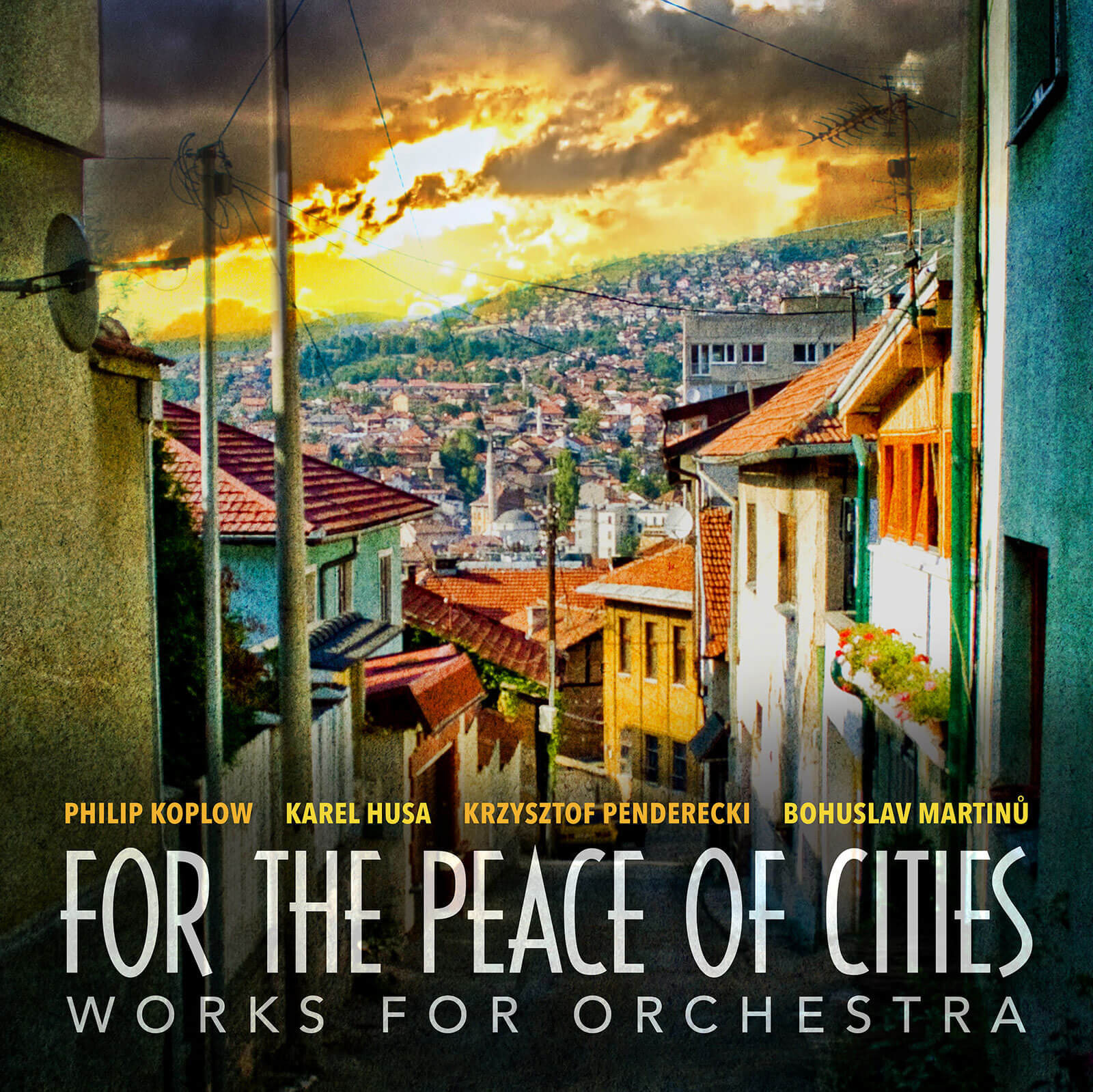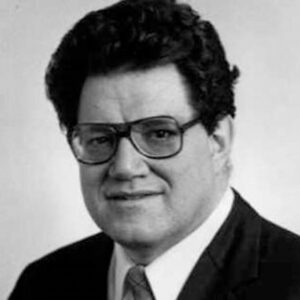
Share Album:
For the Peace of Cities
Philip Koplow composer
Karel Husa composer
Krzysztof Penderecki composer
Bohuslav Martinů composer
“With the arts we can keep faith with our ancestors, speak for justice, and even address the most tragic and painful issues. If you are hurt and angry don’t use violence — write a poem or a song. Use your feelings to create something.” These words by late composer Philip Koplow (1943-2018) perfectly encapsulate both his life mission as a composer and the mission of FOR THE PEACE OF CITIES. Released posthumously, this collection features Koplow’s masterpieces for orchestra as well as three 20th-century works that commemorate the lives lost in war tragedies.
Koplow’s two pieces on the album, For the Peace of Cities and How Sweet the Sound, were both written from a place of desire to bring hope and healing into a violence-torn world. The title track, inspired by the Dayton Accord in Koplow’s home state, commemorates the lives brutally lost in Bosnian War at the end of the 20th Century. How Sweet the Sound, originally written for solo cello, is inspired by the tune “Amazing Grace” — a tune which has brought comfort and hope to generations of people in times of pain. The piece is filled with variations on the old hymn — as Koplow stated, “each variation is in a new key, implying that God’s love and inspiration is available to all people in all times.”
The music of Philip Koplow is complemented by three similarly-minded composers: Karel Husa, Krzysztof Penderecki, and Bohuslav Martinů. Each of these composers’ three pieces on the album honor the lives lost in three wartime tragedies: Husa’s Music for Prague 1968 which retold the story of the Soviet Union crushing the Prague Spring reform movement in Husa’s homeland; Threnody to the Victims of Hiroshima which Penderecki dedicated to the Japanese victims after hearing the piece live and being moved by the emotional charge of the performance; and Martinů’s Memorial to Lidice honors the victims of the massacre in Lidice, Czechoslovakia in 1942.
FOR THE PEACE OF CITIES, through each deeply moving orchestral work, gives honor to two deserving parties: the victims commemorated in each piece, and the late Philip Koplow, who devoted his musical life to standing up for social justice and creating a better world for those to come.
Listen
Track Listing & Credits
| # | Title | Composer | Performer | |
|---|---|---|---|---|
| 01 | For the Peace of Cities | Philip Koplow | Cincinnati Chamber Orchestra | Paul Nadler, conductor; Jorja Fleezanis, violin; James Braid, violin | 13:18 |
| 02 | How Sweet the Sound | Philip Koplow | Hamilton-Fairfield Symphony Orchestra | Paul John Stanbery, conductor | 9:53 |
| 03 | Music for Prague 1968 (Version for Wind Band): I. Introduction & Fanfare | Karel Husa | Rutgers Wind Ensemble | William Berz, conductor | 6:07 |
| 04 | Music for Prague 1968 (Version for Wind Band): II. Aria | Karel Husa | Rutgers Wind Ensemble | William Berz, conductor | 4:48 |
| 05 | Music for Prague 1968 (Version for Wind Band): III. Interlude | Karel Husa | Rutgers Wind Ensemble | William Berz, conductor | 4:34 |
| 06 | Music for Prague 1968 (Version for Wind Band): IV. Toccata & Chorale | Karel Husa | Rutgers Wind Ensemble | William Berz, conductor | 7:52 |
| 07 | Threnody to the Victims of Hiroshima | Krzysztof Penderecki | Polish National Radio Symphony Orchestra | Antoni Wit, conductor | 9:00 |
| 08 | Památník Lidicím, H. 296 | Bohuslav Martinů | Philadelphia Orchestra | Christoph Eschenbach, conductor | 12:01 |
In loving memory of Philip Koplow (1943 – 2018)
For The Peace of Cities
Recorded January 10, 1999 at Memorial Hall in Cincinnati OH
How Sweet the Sound
World premiere, recorded November 18, 2001 at St. Julie Billiart Church in Hamilton OH during the 50th Anniversary Celebration of the Hamilton-Fairfield Symphony Orchestra. The piece was dedicated to the living memory of a great friend and supporter of Koplow’s, Dr. Edward Kezur
Music for Prague 1968
Recorded March 28, 2008 in the Nicholas Music Center of Rutgers NJ
Producer Joe H. Brashier
Engineer Mark J. Morette
Editor William Berz
Editing and Mastering Engineer David St. Onge
Courtesy of Naxos of America, Inc.
Threnody To the Victims of Hiroshima
Recorded October 27, 1998 at the Grzegorz Fitelberg Concert Hall in Katowice, Poland
Producer and Engineer Beata Jankowska
Publishers Schott & Co.
Courtesy of Naxos of America, Inc.
Pamatnik Lidicim (Memorial to Lidice) H. 296
Recorded live May 2005 at Verizon Hall in Philadelphia PA
Executive Producer Kevin Kleinmann
Recording Producer Martha de Francisco
Balance Engineer and Editing Everett Porter (Polyhymnia –
Baarn, The Netherlands)
Recording Engineer Charles Gagnon
Publishers Edwin F. Kalmus & Co.
Courtesy of Naxos of America, Inc.
Executive Producer Bob Lord
Executive A&R Sam Renshaw
A&R Director Brandon MacNeil
VP, Audio Production Jeff LeRoy
Audio Director Lucas Paquette
Mastering Shaun Michaud
VP, Design & Marketing Brett Picknell
Art Director Ryan Harrison
Design Edward A. Fleming
Publicity Patrick Niland, Sara Warner
Artist Information

Philip Koplow
Philip Koplow’s first association with professional Cincinnati musicians was the Cincinnati Chamber Orchestra’s performance of his tone poem Generations in 1980. Koplow has had fine orchestral success — his music has been performed by the Cleveland Symphony, the Cincinnati Symphony, the Cincinnati Pops, the National Symphony, the Los Angeles Philharmonic, the Wyoming Symphony, the Columbus Symphony, the West Chester Symphony, the Blue Ash Symphony, the Northern Kentucky Symphony, and has been recorded by the Silesian Philharmonic in Poland.
